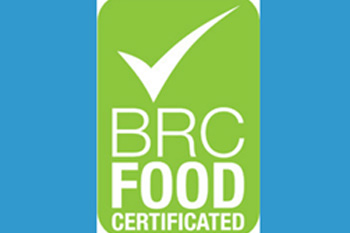GFSI stands for the Global Food Safety Initiative, which is a project launched by the business forum CIES in 2000, to harmonies international food safety standards and reduce the need for multiple supplier audits. The CIES members include the world’s leading retailer organizations and food manufacturers. Rather than create another Standard, the GFSI Technical Committee identified the key components necessary for good food safety standards and the operating protocols for the delivery of certification, whilst creating a benchmarking document.
Standard owners such as the BRC were invited to submit their Standards for benchmarking. It is important to recognize that the bench marking process was not designed to create a single super Standard, but to allow innovation and competitive development between Standard owners whilst meeting a core set of requirements. The BRC’s ability to react to changing food safety concerns, meet customer requirements, yet provide a simple, easy to follow process for manufacturers has led to the Standard becoming the most used GFSI equivalent Standard with over 15,000 certificated sites worldwide NABL Consultant in Ahmedabad.

The BRC Global Standards for Food Safety was the first Standard to be recognized as meeting the benchmark back in 2000 and each issue has continued to be benchmarked since. Benchmarking of the BRC Global Standard for food safety issue 6 The GFSI have stated that the BRC Global Standard for Food Safety continues to be a GFSI recognized program, whilst the benchmarking against the GFSI Guidance Document 6 is undertaken on the GFSI website ISO Consultant in Ahmedabad.
As with every other issue of the BRC Standard, it has been submitted for benchmarking against the relevant GFSI Guidance Document, which co-incidentally is also Issue 6. Changes made to Issue 6 largely built upon the existing Issue 5 Standard by adding clarity and in places greater detail to ensure consistent application. The changes were made with careful consideration of GFSI requirements and with the benefit of having the new Guidance Document available for the rewrite process. The Standard is going through the benchmarking process against the new GFSI Guidance Document Issue 6 and has the same status as all of the other GFSI recognized schemes – none of which have been benchmarked against the new Guidance Document.
BRC Food Safety Certification Service
We offer our valued clients the premium quality BRC Food Safety Certification Service. For any food safety system to be effective it is essential that the management of the factory is fully committed to its application and continued development. This sets out requirements for the management of food quality and safety, building upon the principles of ISO 9000. This includes requirements for product specifications, supplier approval, traceability, and the management of incidents and product recalls. This service is rendered in a hassle-free manner and within the assured time frame.

The GFSI and BRC Global Standards:
- GFSI stands for the Global Food Safety Initiative, which is a project launched by the business forum CIES in 2000, to harmonies international food safety standards and reduce the need for multiple supplier audits. The CIES members include the world’s leading retailer organizations and food manufacturers. Rather than create another Standard, the GFSI Technical Committee identified the key components necessary for good food safety standards and the operating protocols for the delivery of certification, whilst creating a benchmarking document.
- Standard owners such as the BRC were invited to submit their Standards for benchmarking. It is important to recognise that the benchmarking process was not designed to create a single super Standard, but to allow innovation and competitive development between Standard owners whilst meeting a core set of requirements. The BRC’s ability to react to changing food safety concerns, meet customer requirements, yet provide a simple, easy to follow process for manufacturers has led to the Standard becoming the most used GFSI equivalent Standard with over 15,000 certificated sites worldwide.
Benchmarking of the BRC Global Standard for food safety issue 6:
- The GFSI have stated that the BRC Global Standard for Food Safety continues to be a GFSI recognized program, whilst the benchmarking against the GFSI Guidance Document 6 is undertaken on the GFSI website.
- As with every other issue of the BRC Standard, it has been submitted for benchmarking against the relevant GFSI Guidance Document, which co-incidentally is also Issue 6. Changes made to Issue 6 largely built upon the existing Issue 5 Standard by adding clarity and in places greater detail to ensure consistent application. The changes were made with careful consideration of GFSI requirements and with the benefit of having the new Guidance Document available for the rewrite process. The Standard is going through the benchmarking process against the new GFSI Guidance Document Issue 6 and has the same status as all of the other GFSI recognised schemes – none of which have been benchmarked against the new Guidance Document.
The standard is divided into 7 chapters:
- Senior Management Commitment and Continual Improvement – For any food safety system to be effective it is essential that the factory senior management are fully committed to its application and continued development.
- The Food Safety Plan (HACCP) – The basis for the Food Safety System is an effective HACCP programme based on the requirements of the internationally recognized Codex Alimentarius system.
- Food Safety and Quality Management System – This sets out requirements for the management of food safety and quality, building upon the principles of ISO 9000. This includes requirements for product specifications, supplier approval, traceability, and the management of incidents and product recalls
- Site Standards – These define expectations for the processing environment including the layout and maintenance of the buildings and equipment, cleaning, pest control and waste management. This includes a specific section on managing foreign body controls.